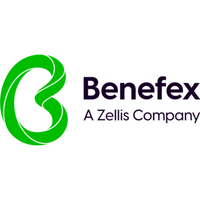How to evoke emotion and feelings around employee benefits

I can remember as a kid, sitting with friends whilst one of us played video games. There was a certain joy in watching the game unfold, seeing how your friend got on, and the exchange of teasing and heckling that went with it. But ultimately it would come round to your turn – and I thought that was what made the build-up exciting. But maybe I was wrong.
Mirror neurons
Back in the 1980s, a group of scientists wanted to understand how certain neurons reacted to different objects and actions. They set about studying the brain reactions of Macaques, using electrodes to measure brain activity. And they stumbled upon something interesting; certain neurons would fire when a monkey completed an action, like eating a peanut. But those same neurons would light up again when watching someone else eat a peanut. Observing a behaviour gave them similar responses to performing the behaviour themselves.
Research has continued over the years, and while no one will recreate such an intrusive study on humans, the research all suggests our brains work in the same way. If we see someone do something, our brains will light up as if we were doing it ourselves. Which explains why we watch videos of people driving cars, travelling, playing games and thrill-seeking.
How this links with what we know about communications
So, we can evoke emotion and feelings in our audiences by showing them people enjoying our products/experiences (or in this case, benefits). But how do we put this into practice?
Well, we talk about story-telling quite often. It’s something we’re effectively pre-programmed to tune-in to, and a great way to share real employee experience. And it also links into another tool at our disposal – social proof.
When we consider buying a product these days, it’s pretty common to check people’s reviews first. Tripadvisor really kicked this off. Then Amazon followed and, well, now they’re everywhere. We need to build trust in what we’re going to spend our money on, and what better way than hearing from someone else who has already done so, especially someone who is similar to us; a colleague, for example.
Spin communication on its head
With all this knowledge of how we work, let’s spin the idea of communication on its head. Forget the idea of farming information out centrally for a moment, it has its place, but there are other options to explore. Now is the time to unlock our workforces to tell their own stories.
Consider this:
- You reach out to the key influencers in your workforce, the ones who are open and active.
- You run a competition to give away flexible benefits to someone willing to share their experience.
- You provide the winner(s) with some of your flexible benefits, free of charge.
- In exchange, they regularly blog – or even better – vlog (that’s a video blog for the old-school kids out there, like me) about their experience.
Your workforce could really get under the skin of some of these benefits and the joys they bring. That could mean enjoying travel experiences with the peace of mind of your insurance. The thrill of a Ferrari drive with an experience day. Even relaxing with a new gadget, or a fruity number from the wine delivery. It translates the benefits into real life experiences which is so often missing. It will spark a reaction in employees and boost benefit credibility along the way. You may not want to do this for every benefit, but you can be sure that if your benefit scheme was a shop, this approach would get people through the shop door – then who knows what else they might add to their basket?
Embracing employee control
The idea of giving so much control to employees can be a daunting prospect. But look beyond the workplace, and it’s the world we all now live in. Better to embrace it and join the digital revolution, than watch employees navigate towards the places that do.
It’s time to think about how you can get your users to share their stories and drive more regular communication. It’ll make for great social endorsement, a deeper experience, but it will also take some pressure off you and your teams.
Take a leap of faith. Give control to your employees. And let us know how you get on.
Simon Andrew is insight and engagement director at Benefex.
This article was provided by Benefex.
In partnership with Benefex
The home of award-winning employee benefits, reward, recognition, & communications.







